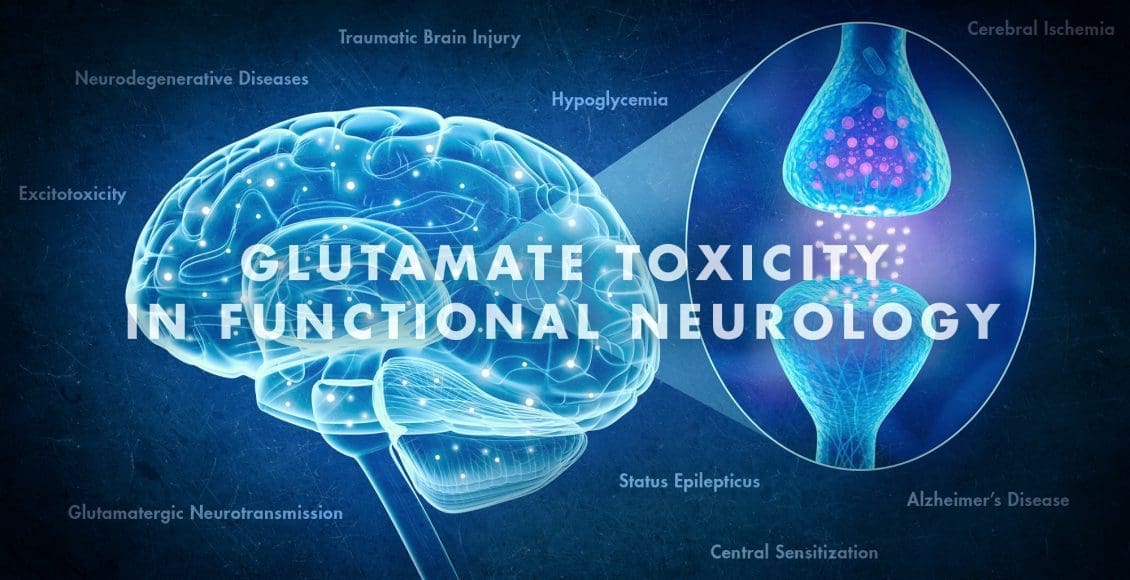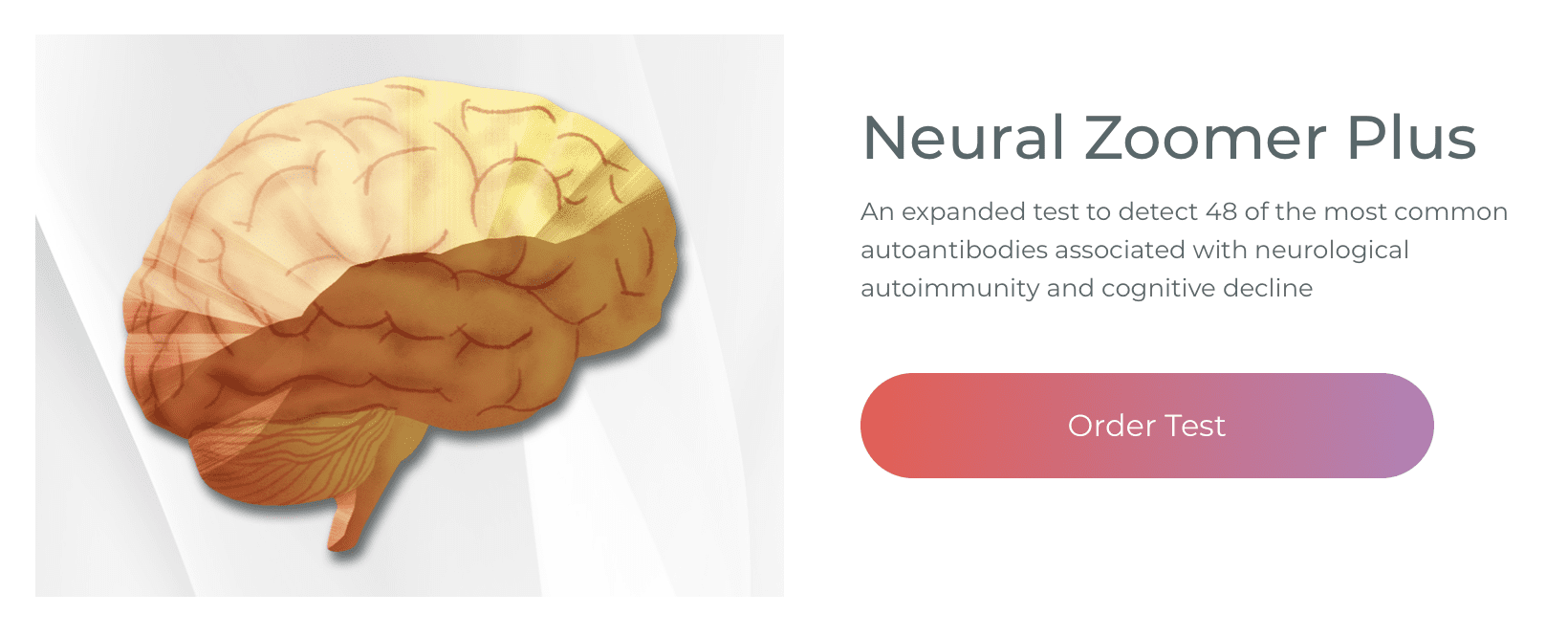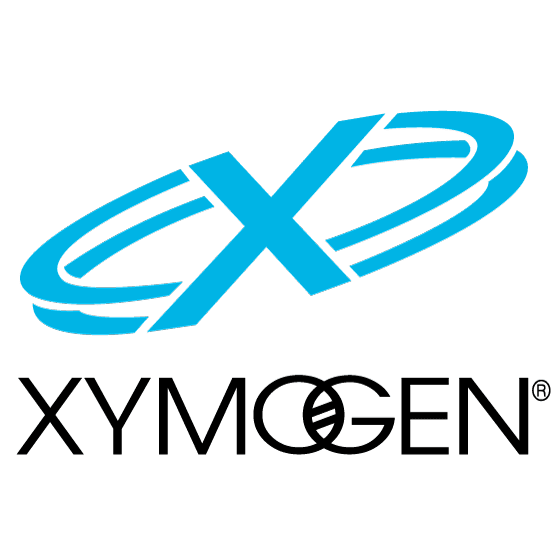The term excitotoxicity was first employed to demonstrate the capability of L-glutamate, in addition to structurally-associated amino acids, to destroy nerve cells, a process which has been suggested to occur in acute and chronic health issues of the central nervous system (CNS). Excitotoxicity is caused by the excess stimulation of iGluRs into a characteristic loss of cell bodies and dendrites as well as post-synaptic structures. There is a substantial degree of variation in the sensitivity of nerve cells compared to the variety of iGluRs which is associated with the specific receptors demonstrated on the nerve cells and their metabolisms. The susceptibility of neurons to excitotoxicity can be affected with age. Â
Acute excitotoxic nerve cell death is believed to occur in reaction to a number of severe insults, including cerebral ischemia, traumatic brain injury (TBI), hypoglycemia, and status epilepticus. However, what about neurodegenerative diseases, such as Alzheimer’s disease? Does chronic excitotoxicity also occur? Could exposure of nerve cells to low but above-average concentrations of L-glutamate, or even glutamatergic neurotransmission through a variety of molecules be involved as previously mentioned, within an extended time period also significantly result in neural cell death? The purpose of the article below is to demonstrate the concepts of acute and chronic glutamate toxicity on the health and wellness of the brain. Â
Table of Contents
Acute and Chronic Glutamate Toxicity
Excitotoxicity was initially studied in animals, however, so as to comprehend the mechanisms underlying this procedure, cell culture models were developed. The basic cell culture model of acute excitotoxicity involves the treatment of principal neurons in accordance with L-glutamate or particular iGluRs for a brief time interval (min) and then analyzing downstream events in the time point which is most relevant for the research study. By way of instance, cell death is frequently determined after 24 hours. While these types of research studies are proven to be quite useful for understanding the pathways involved in acute excitotoxicity, it has demonstrated to be far more difficult to evaluate chronic excitotoxicity in culture partially because it is not completely clear how to specify “chronic” in the context of cell culture. Does consistent imply a minimal dose supplied for 24 hours instead of a maximum dose supplied for 5 to 10 minutes or is it more complicated than that? Â
Among the few research studies which tried to come up with a model of chronic excitotoxicity, it was revealed that it is indeed more complicated with acute and chronic excitotoxicity appearing to be different processes. In this research study, the researchers utilized pure cultures of primary cortical neurons developed from day 14 mouse embryos and treated them after seven and 14 days in culture (DIV). For constant excitotoxicity, the neurons were exposed to L-glutamate or NMDA for 24 hours and for severe excitotoxicity for 10 minutes. In both circumstances, cell death was measured after 24 hours. Surprisingly, the EC50s in their toxicity of L-glutamate were lower for acute toxicity, particularly in the 7 DIV cultures, when compared with the EC50s for chronic toxicity. Additionally, it was discovered that a high cell culture density increased the cells’ sensitivity into excitotoxicity that was acute but not chronic. Further research studies indicated that the lower sensitivity of these neurons to L-glutamate in the chronic excitotoxicity paradigm was due to the stimulation of mGluR1, associated with earlier data on the neuroprotective effects of mGluR1 stimulation, among other important processes. Â
Further Research Studies for Glutamate Toxicity
An alternative approach for understanding chronic glutamate toxicity used organotypic spinal cord cultures in conjunction with L-glutamate uptake inhibitors. These spinal cord cultures, which had been prepared from 8-day-old rat pups, were kept in culture for up to 3 months. Persistent inhibition of L-glutamate uptake utilizing two varieties of uptake inhibitors caused a consistent increase of L-glutamate in the cell culture medium and time period as well as a concentration of dependent motor neuron cell death. The highest concentration of uptake inhibitor increased extracellular L-glutamate levels at least 25-fold and began to kill the cells within 1 week whereas a five-fold lower concentration raised extracellular L-glutamate levels eight-fold and cell death only began after 2 to 3 weeks of treatment. The toxicity was obstructed with non-NMDA but not NMDA receptors as well as by inhibitors of L-glutamate synthesis or release. These research studies ultimately indicate that moderately increased L-glutamate concentrations can also induce toxicity as well as a variety of other health issues. Â
In vivo approaches to studying excitotoxicity have relied on an approach analogous to that utilized with the spinal cord cultures. In the wide variety of the research studies, a single or multiple EAATs were transiently or permanently genetically eliminated and the effects on brain function were evaluated. During the first few research studies, which utilized rats, chronic intraventricular administration of antisense RNA was utilized to eliminate every one of the 3 primary EAATs (EAAT1, EAAT2, and EAAT3). The loss of either of the glial L-glutamate transporters (EAAT1 and EAAT2) but not the neuronal transporter (EAAT3) caused large increases in extracellular L-glutamate concentrations in the striatum following 7 days as demonstrated by microdialysis (EAAT2, 32-fold increase; EAAT1, 13-fold increase). Treatment with the EAAT1 or EAAT2 antisense oligonucleotides caused a progressive motor impairment whereas epilepsy was produced by the EAAT3 antisense oligonucleotide. The loss of any of the 3 transporters demonstrated clear evidence of neuronal damage in the striatum and hippocampus after 7 days of treatment although the effects of the EAAT1 and EAAT2 antisense oligonucleotides were far more dramatic, consistent with the substantial increases in extracellular L-glutamate brought about by treatment. Â
Particularly different results were demonstrated with homozygous mice deficient in EAAT2 or EAAT1. Mice deficient in EAAT2 demonstrated sudden and normally deadly seizures with 50 percent dead by 6 weeks of age. Approximately 30 percent of these mice demonstrated selective degeneration in the CA1 area at 4 to 8 weeks of age. L-glutamate amounts in the CA1 region of the hippocampus measured by microdialysis were three-fold greater in the mutant mice as compared with the wild type mice. In contrast, heterozygous EAAT2 knock-out mice have an average lifespan and do not reveal hippocampal CA1 atrophy. However, they exhibit several behavioral abnormalities suggestive of moderate glutaminergic hyperactivity. While mice deficient in EAAT1, that is expressed in cerebellar astrocytes, didn’t reveal changes in cerebellar arrangement or obvious indicators of cerebellar impairment, such as ataxic gait, they had not been able to adapt to difficult motor tasks like rapidly running the rotorod. When taken collectively, these results imply that disruptions in homeostasis which are glutamatergic have a greater impact when they occur in the animal rather than when they are found from conception. Â
Other Health Issues in Glutamate Toxicity
Tuberous sclerosis complex (TSC) is a multi-system genetic disease caused by the mutation of both TSC1 or TSC2 genes, where it is characterized by severe neurodegenerative diseases. Mice with inactivation of the TSC1 gene in glia have a less than 75 percent reduction in the expression and function of EAAT1 and EAAT2 as well as to cause seizures. At 4 weeks of age, prior to the development of seizures in these mice, there was a 50 percent increase in extracellular L-glutamate in the hippocampus of the mutant mice, as determined by microdialysis, which correlated with increases in markers of cell death in neurons in both hippocampus and cortex. Utilizing slices from mice that were 2 to 4 week old, impairments in long-term potentiation were determined, which translated into deficits when mice were analyzed for contextual and spatial memory in the Morris water maze and fear conditioning assays. Further research studies are still necessary for outcome measures. Â
In the majority of the research studies described above, there was a large increase in extracellular L-glutamate that, when analyzed, caused adverse effects on the role of specific neuronal populations. To ascertain the long-term effects of more moderate increases in extracellular glutamate, further research studies created transgenic (Tg) mice with extra copies of this gene for Glud1, especially in neurons. Mitochondrial 2-oxoglutarate from Glud1 is transported into the cytoplasm of nerve terminals in which it’s converted back into L-glutamate and kept in synaptic vesicles thus leading to the pool of synaptically releasable L-glutamate. Nine-month-old Glud1 Tg mice demonstrated a 10 percent boost in L-glutamate in the hippocampus and striatum relative to wild type mice as determined to utilize magnetic resonance spectroscopy. In addition, 50 percent caused increased L-glutamate release in the striatum. At 12 to 20 months of age, the Glud1 Tg mice revealed significant decreases in the numbers of neurons in the CA1 area of the hippocampus and granule cell layer of the dentate gyrus in addition to an age-dependent loss of the two dendrites and dendritic spines in the hippocampus. There was also a drop in long-term potentiation after high frequency stimulation in hippocampal slices in the mice when compared with the wild type mice. Evaluation of the transcriptome of those Glud1 Tg mice in comparison with wild type mice indicated that long-term moderate increases in cerebral L-glutamate ultimately caused both rapid aging in the level of gene expression combined with compensatory reactions which protected against pressure and/or promoted recovery, among other capabilities. Â
Conclusion
Brain function and nerve cell survival can be affected by excitotoxicity. The results appear to be highly dependent on the degree of L-glutamate increase, however, even a 10 percent growth appears to influence nerve cell survival, particularly in the context of aging indicating that chronic excitotoxicity may be associated with neurodegenerative diseases. Â
Several toxins which connect to iGluRs and that have also been demonstrated to cause excitotoxicity in cell culture may cause slowly growing neurological health issues in both animals and humans. Surprisingly, each toxin appears to target a particular type of neuron, an effect which may be associated with the pharmacokinetics and ADME properties of the toxins, which have not been analyzed to any great extent. The data from these types of toxins supports the idea that excitotoxicity may play a fundamental role in neurodegenerative diseases as well as in other health issues which exist in humans. Â
Because iGluRs are demonstrated both from the synapse and in extra-synaptic locations, there has been a great deal of effort devoted to discovering if the region of the receptors impacts the toxicity of molecules. An influential research study with primary neuronal cultures indicated that synaptic and extrasynaptic NMDA receptors have counteracting effects on cell survival with neural cell death being primarily controlled by extrasynaptic NMDA receptors. Nonetheless, these outcome measures have not been reproduced in brain slices or in vivo. Furthermore, many more recent research studies utilizing the exact same primary neuronal culture preparation protocol as the prior research study found either no difference between synaptic and extrasynaptic NMDA receptors in boosting excitotoxicity or discovered that both receptors were needed for cell death. Finally, a variety of research studies that supported the idea that extrasynaptic NMDA receptors promote excitotoxicity relied on the NMDA receptor inhibitor memantine that was originally believed to specifically act on extrasynaptic NMDA receptors. However, more recent research studies demonstrate that memantine can inhibit both synaptic and extrasynaptic NMDA receptors. These results strongly imply that synaptic and extrasynaptic NMDA receptors may contribute to excitotoxicity but the contribution of each depends on the experimental and/or pathological conditions. Â

Glutamate is the primary excitatory neurotransmitter in the brain. Although it plays a fundamental role in the overall structure and function of the central nervous system, excessive amounts of glutamate can ultimately cause excitotoxicity which may lead to a variety of health issues, such as Alzheimer’s disease and other types of neurodegenerative diseases. Acute and chronic excitotoxicity treatment currently focuses on decreasing or restricting glutamate receptors or extracellular glutamate. The article above summarizes the available research studies for glutamate toxicity in neurodegenerative diseases. – Dr. Alex Jimenez D.C., C.C.S.T. Insight
Neuropathy Treatment with LLLT
Excitotoxicity demonstrates the capability of L-glutamate, as well as structurally-associated amino acids, processes which have been suggested to occur in acute and chronic excitotoxicity. Excitotoxicity is caused by the excess stimulation of iGluRs in cell bodies and dendrites as well as post-synaptic structures. There is a substantial degree of variation in nerve cells compared to iGluRs associated with the receptors demonstrated on the nerve cells and their metabolisms. The scope of our information is limited to chiropractic, musculoskeletal and nervous health issues as well as functional medicine articles, topics, and discussions. We use functional health protocols to treat injuries or chronic disorders of the musculoskeletal system. To further discuss the subject matter above, please feel free to ask Dr. Alex Jimenez or contact us at 915-850-0900 . Â
Curated by Dr. Alex Jimenez Â
References Â
- Lewerenz, Jan, and Pamela Maher. “Chronic Glutamate Toxicity in Neurodegenerative Diseases-What Is the Evidence?†Frontiers in Neuroscience, Frontiers Media S.A., 16 Dec. 2015, www.ncbi.nlm.nih.gov/pmc/articles/PMC4679930/.
Additional Topic Discussion: Chronic Pain
Sudden pain is a natural response of the nervous system which helps to demonstrate possible injury. By way of instance, pain signals travel from an injured region through the nerves and spinal cord to the brain. Pain is generally less severe as the injury heals, however, chronic pain is different than the average type of pain. With chronic pain, the human body will continue sending pain signals to the brain, regardless if the injury has healed. Chronic pain can last for several weeks to even several years. Chronic pain can tremendously affect a patient’s mobility and it can reduce flexibility, strength, and endurance.
Neural Zoomer Plus for Neurological Disease
Dr. Alex Jimenez utilizes a series of tests to help evaluate neurological diseases. The Neural ZoomerTM Plus is an array of neurological autoantibodies which offers specific antibody-to-antigen recognition. The Vibrant Neural ZoomerTM Plus is designed to assess an individual’s reactivity to 48 neurological antigens with connections to a variety of neurologically related diseases. The Vibrant Neural ZoomerTM Plus aims to reduce neurological conditions by empowering patients and physicians with a vital resource for early risk detection and an enhanced focus on personalized primary prevention. Â
Formulas for Methylation Support
XYMOGEN’s Exclusive Professional Formulas are available through select licensed health care professionals. The internet sale and discounting of XYMOGEN formulas are strictly prohibited.
Proudly, Dr. Alexander Jimenez makes XYMOGEN formulas available only to patients under our care.
Please call our office in order for us to assign a doctor consultation for immediate access.
If you are a patient of Injury Medical & Chiropractic Clinic, you may inquire about XYMOGEN by calling 915-850-0900.
For your convenience and review of the XYMOGEN products please review the following link.*XYMOGEN-Catalog-Download Â
* All of the above XYMOGEN policies remain strictly in force.
Â
Post Disclaimer
Professional Scope of Practice *
The information herein on "Glutamate Toxicity in Functional Neurology" is not intended to replace a one-on-one relationship with a qualified health care professional or licensed physician and is not medical advice. We encourage you to make healthcare decisions based on your research and partnership with a qualified healthcare professional.
Blog Information & Scope Discussions
Welcome to El Paso's Premier Wellness, Personal Injury Care Clinic & Wellness Blog, where Dr. Alex Jimenez, DC, FNP-C, a Multi-State board-certified Family Practice Nurse Practitioner (FNP-BC) and Chiropractor (DC), presents insights on how our multidisciplinary team is dedicated to holistic healing and personalized care. Our practice aligns with evidence-based treatment protocols inspired by integrative medicine principles, similar to those found on this site and our family practice-based chiromed.com site, focusing on restoring health naturally for patients of all ages.
Our areas of multidisciplinary practice include Wellness & Nutrition, Chronic Pain, Personal Injury, Auto Accident Care, Work Injuries, Back Injury, Low Back Pain, Neck Pain, Migraine Headaches, Sports Injuries, Severe Sciatica, Scoliosis, Complex Herniated Discs, Fibromyalgia, Chronic Pain, Complex Injuries, Stress Management, Functional Medicine Treatments, and in-scope care protocols.
Our information scope is multidisciplinary, focusing on musculoskeletal and physical medicine, wellness, contributing etiological viscerosomatic disturbances within clinical presentations, associated somato-visceral reflex clinical dynamics, subluxation complexes, sensitive health issues, and functional medicine articles, topics, and discussions.
We provide and present clinical collaboration with specialists from various disciplines. Each specialist is governed by their professional scope of practice and their jurisdiction of licensure. We use functional health & wellness protocols to treat and support care for musculoskeletal injuries or disorders.
Our videos, posts, topics, and insights address clinical matters and issues that are directly or indirectly related to our clinical scope of practice.
Our office has made a reasonable effort to provide supportive citations and has identified relevant research studies that support our posts. We provide copies of supporting research studies upon request to regulatory boards and the public.
We understand that we cover matters that require an additional explanation of how they may assist in a particular care plan or treatment protocol; therefore, to discuss the subject matter above further, please feel free to ask Dr. Alex Jimenez, DC, APRN, FNP-BC, or contact us at 915-850-0900.
We are here to help you and your family.
Blessings
Dr. Alex Jimenez DC, MSACP, APRN, FNP-BC*, CCST, IFMCP, CFMP, ATN
email: coach@elpasofunctionalmedicine.com
Multidisciplinary Licensing & Board Certifications:
Licensed as a Doctor of Chiropractic (DC) in Texas & New Mexico*
Texas DC License #: TX5807, Verified: TX5807
New Mexico DC License #: NM-DC2182, Verified: NM-DC2182
Multi-State Advanced Practice Registered Nurse (APRN*) in Texas & Multi-States
Multistate Compact APRN License by Endorsement (42 States)
Texas APRN License #: 1191402, Verified: 1191402 *
Florida APRN License #: 11043890, Verified: APRN11043890 *
License Verification Link: Nursys License Verifier
* Prescriptive Authority Authorized
ANCC FNP-BC: Board Certified Nurse Practitioner*
Compact Status: Multi-State License: Authorized to Practice in 40 States*
Graduate with Honors: ICHS: MSN-FNP (Family Nurse Practitioner Program)
Degree Granted. Master's in Family Practice MSN Diploma (Cum Laude)
Dr. Alex Jimenez, DC, APRN, FNP-BC*, CFMP, IFMCP, ATN, CCST
My Digital Business Card
RN: Registered Nurse
APRNP: Advanced Practice Registered Nurse
FNP: Family Practice Specialization
DC: Doctor of Chiropractic
CFMP: Certified Functional Medicine Provider
MSN-FNP: Master of Science in Family Practice Medicine
MSACP: Master of Science in Advanced Clinical Practice
IFMCP: Institute of Functional Medicine
CCST: Certified Chiropractic Spinal Trauma
ATN: Advanced Translational Neutrogenomics








 Again, We Welcome You.
Again, We Welcome You.
Comments are closed.